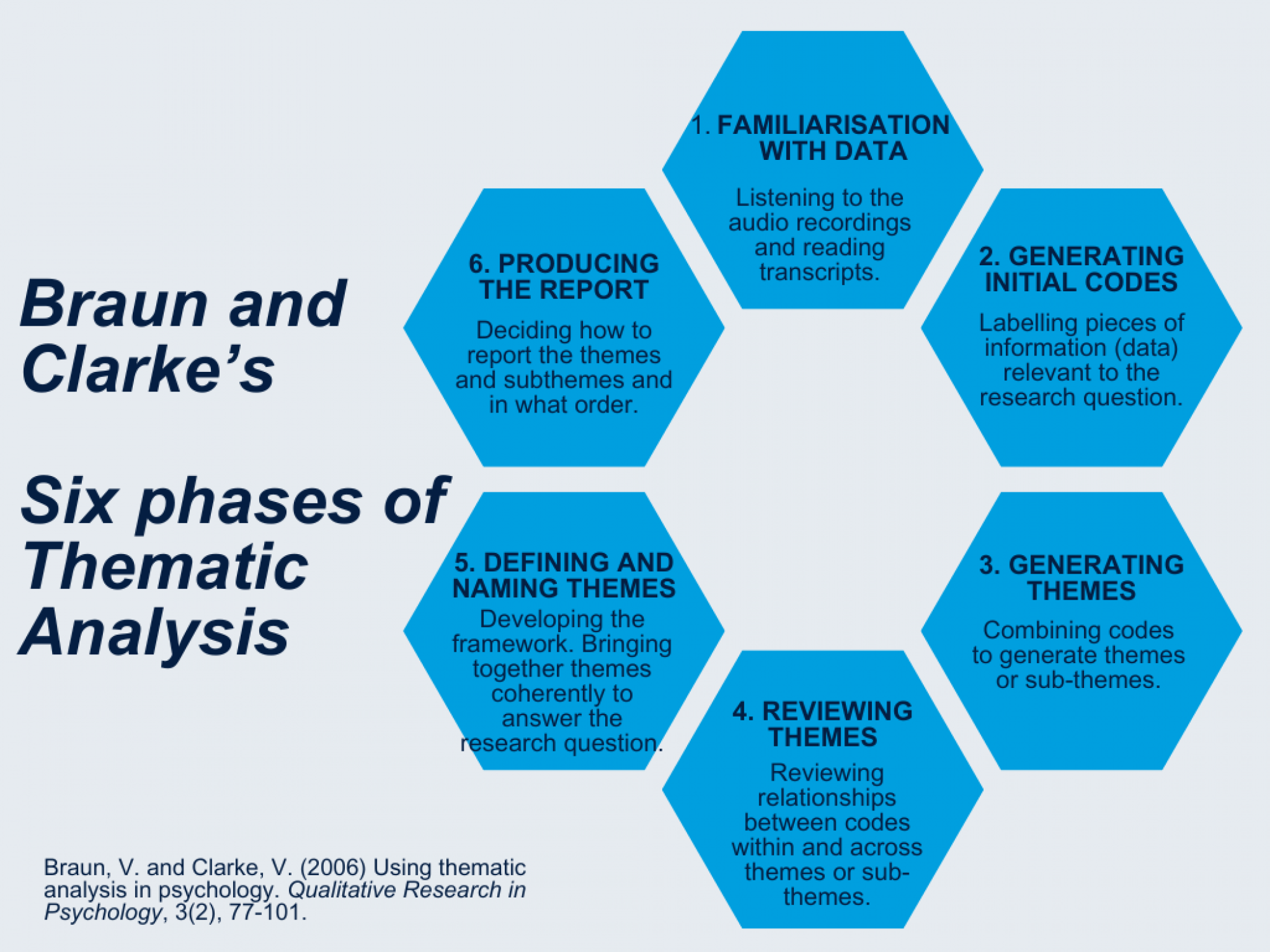Qualitative Analysis
When conducting qualitative data analysis, there are some key considerations to address to ensure rigor, validity, and ethical integrity.
Here are the top things to consider:
-
Research Objectives
You must have clearly defined research objectives to guide your analysis to ensure your analysis is focused on addressing your aims.
-
Data Collection and Quality
Familiarise yourself with the context of your qualitative data.
Consider how the data was collected, the participants' characteristics, and any biases or limitations in the data.
-
Data Management
Develop a systematic approach to transcribing, managing, and analysing your data to maintain integrity and confidentiality.
-
Familiarise yourself with the Data
This can be achieved by listening to the audio recording, reading and re-reading the transcripts.
Make notes, highlight key passages and immerse yourself in the data to gain a deep understanding of its content and context.
-
Coding
Use a systematic approach to code and categorise the data, identifying common patterns or themes.
Consider using both inductive and deductive coding techniques to capture emergent themes as well as pre-defined concepts.
-
Data Interpretation
Interpret the data by identifying overarching themes, patterns or relationships within the data.
Consider the context, participants' perspectives and theoretical frameworks to deepen your understanding of the findings.
-
Consider Bias
Reflect on your own biases, assumptions and perspectives as a researcher.
Be transparent during each phase of the analysis process and acknowledge how your background and previous experiences may influence how you interpret the data.
-
Validity and Trustworthiness
You can ensure the validity and trustworthiness of your analysis by coding transcripts independently by regularly discussing codes and themes with researchers in the team and triangulation of other data sources you may have.
-
Ethical Integrity
You must adhere to ethical guidelines throughout the research process. Including obtaining informed consent from participants protecting their anonymity and confidentiality and ensuring you maintain research integrity throughout the research process.
Thematic Analysis
This type of analysis is widely used to identify, analyse and report patters or themes within qualitative data.
It is a systematic approach that ensures rigour and transparency.
Here is a summary of the 6 phases of Thematic Analysis.
Braun and Clarke (2006)

Content Analysis
This involves systematically quantifying the presence of certain words, themes or concepts within the data.
To analyse data using content analysis, the data must firstly be coded or broken down into manageable categories for analysis.
The codes can then be coded into code categories to summarise data further.
There are two types of content analysis: conceptual and relational analysis.
Conceptual Analysis
Conceptual Analysis determines the existence and frequency of concepts.
Here is an example to illustrate the interpretation of implicit data to determine its relevance.
Explicit data: The battery life of my phone is excellent.
This provides explicit information about the quality of charge on the phone.
Implicit data: I do not have to charge my phone every day anymore.
This implicitly indicates they are happy with the charge on the phone but they do not directly say the charge is excellent. Rather this statement implies satisfaction with the quality of charge on the phone.
Explicit and implicit data can both contribute to the analysis. In this example, the implicit data adds depth to the analysis, showing customer satisfaction without direct mention.

Relational Analysis
Relational analysis is similar to conceptual analysis, where you decide the concept(s). However, the analysis involves exploring the relationship between the concepts.
In this type of analysis the concept(s) are pre-defined. Therefore new concepts are not identified during the analysis process.
Relational analysis has subcategories some of which are explained in the diagram.
Once the relationship between the concepts are established you can analyse the strength of the relationships, the direction of the relationships and whether the relationship is positive or negative.
It is these relationships between concepts that are coded in relational analysis rather than the individual concepts.

Narrative Analysis
Narrative analysis can be considered a method used to analyse data and a methodological approach.
When deciding whether narrative analysis is a suitable approach for your research project you must consider your research question. Narrative analysis is best suited for research questions that explore subjective experiences perceptions and meanings.
This approach is used to analyse stories or people's accounts and is often used to analyse data from interviews, focus groups, diaries, or memoirs.
Here we delve into narrative analysis a bit further to help you understand this method and decide whether it is an appropriate method to answer your research question.
Summary of Narrative Analysis

Further reading
For further reading on qualitative analysis methods for your discipline visit the Library catalogue.
NVIVO
Undertaking qualitative data analysis can be time-consuming so it is advisable to use software to help manage the data.



